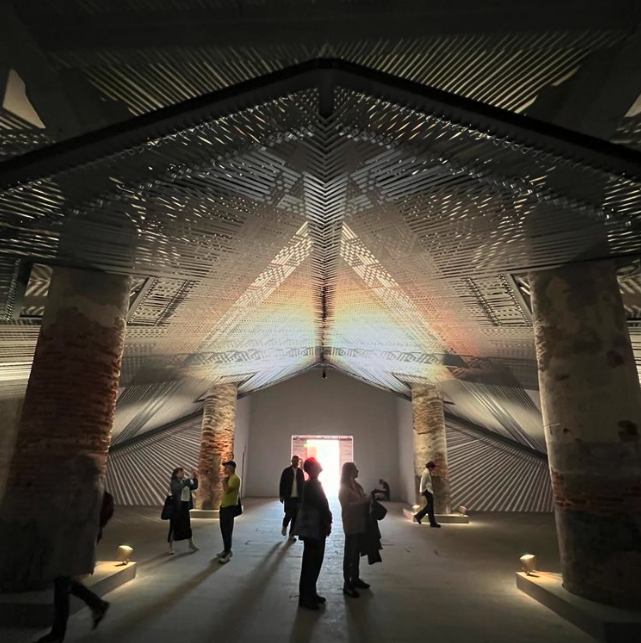Indigenous Artists Take Golden Lions at Venice
By Anna Lentchner

Installation view of ARCHIE MOORE’s "kith and kin," 2024, at the Australia Pavilion for the 60th Venice Biennale. Photo by Andrea Rossetti. Courtesy the artist and The Commercial.
On April 20, the 60th Venice Biennale named Aboriginal artist Archie Moore and the Māori Mataaho Collective as the winners of its most prestigious juried prizes, the Golden Lions for Best National Participation and Best Artist in the International Exhibition, respectively.
Moore is the first Australian artist to be awarded a Golden Lion. His presentation, “kith and kin,” transformed the Australia Pavilion into a tribute to First Nations peoples by tracing his own family’s Kamilaroi/Bigambul lineage back 65,000 years. At the pavilion, Moore covered the ceiling and walls with blackboard paint and hand-drew a family tree of 3,438 names in white chalk. At the center, piles of state documents (primarily coroner inquests) rest on top of a shallow pool of water resembling a moat, reflecting the harrowing frequency of Indigenous incarceration and death in custody. Prize jury chair Julia Bryan-Wilson called the presentation “quietly powerful.”
Accepting the award, Moore stated: “Aboriginal kinship systems include all living things from the environment in a larger network of relatedness—the land itself can be a mentor or a parent to a child. We are all one and share a responsibility of care to all living things now and into the future.”

Installation view of the MATAAHO COLLECTIVE‘s Takapau, 2022, at the International Exhibition of the 60th Venice Biennale, 2024. Screenshot taken from the Mataaho Collective’s Instagram page for ArtAsiaPacific.
The all-women Mataaho Collective, made up of Aotearoa artists Bridget Reweti, Erena Arapere-Baker, Sarah Hudson, and Terri Te Tau, was awarded for its large-scale installation Takapau. Inspired by whariki takapaus, finely woven mats used during Māori weddings, births, and funeral rites, the 24-by-12-meter latticed work aesthetically and methodically recalls matrilinear textile practices. However, this takapau was made using high-visibility polyester straps meant to evoke interdependence by acknowledging manual laborers and community members who are often overlooked. Reweti was absent from the award ceremony (she is preparing to give birth), but Baker, Hudson, and Tau expressed their gratitude for the Biennale’s platform and recognition.
Prize jurors Bryan-Wilson, Alia Swastika, Chika Okeke-Agulu, Elena Crippa, and María Inés Rodríguez said of takapau: “Its impressive scale is a feat of engineering that was only made possibly by the collective strength and creativity of the group. The dazzling pattern of shadows cast on the walls and floor harks back to ancestral techniques and gestures to future uses of such techniques.”
The Venice Biennale, themed “Stranieri Ovunque – Foreigners Everywhere” and curated by Adriano Pedrosa, runs from April 20 until November 24, 2024. The 87 national pavilions are exhibited across the biennale’s Giardini and Arsenale venues, while collateral exhibitions and solo and group shows are being staged across Venice.
Anna Lentchner is assistant editor at ArtAsiaPacific.








